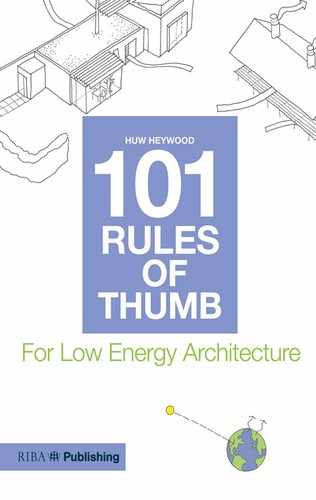Book Description
101 Rules of Thumb sets out the essential elements of low energy architecture in a fresh, intuitive way.
In an area where ever-changing technology and complex legislation and can cloud the designer’s thought-processes, this book encourages the designer to think clearly and intuitively about the fundamentals of low energy buildings.
With reliable, simple rules of thumb that will provide new ideas and refresh the designer’s palette, each page focuses on a single piece of advice or guidance along with a clear hand-drawn illustration, while there are also plenty of tips and more detailed information for those who wish to dig deeper. The emphasis is on passive low-energy principles, and the rules of thumb cover all the design fundamentals from site and location to orientation and form, peppered with some which will help the designer to think ‘outside the box’ about the design process itself.
Table of Contents
- Cover
- Half Title
- Dedication
- Copyright
- Title
- CONTENTS
- PREFACE
- INTRODUCTION
- CHAPTER 1. WORKING WITH SITE AND LOCATION
- CHAPTER 2. MANIPULATING ORIENTATION AND FORM
- CHAPTER 3. THE LOW ENERGY BUILDING ENVELOPE
- CHAPTER 4. ENERGY AND THE INTERNAL ENVIRONMENT
- CHAPTER 5. RULES AND STRATEGIES FOR DIFFERENT CLIMATIC REGIONS
- NARRATIVE BIBLIOGRAPHY
- BIBLIOGRAPHY
- INDEX
